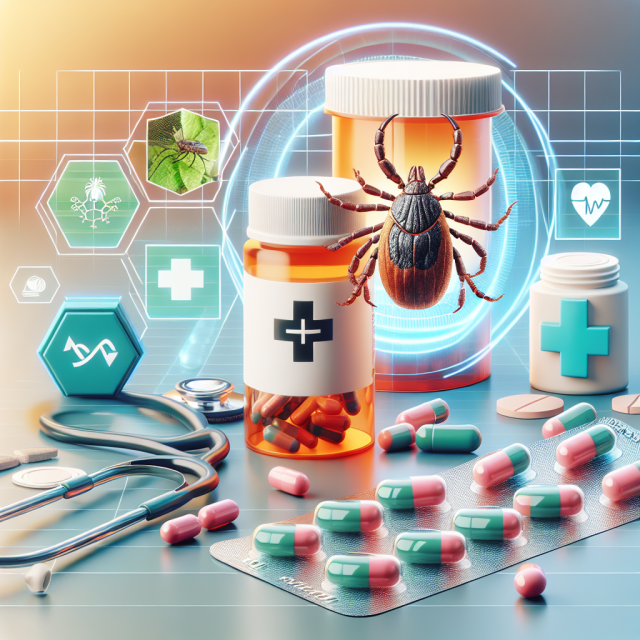
For those dealing with Lyme disease, treatment can feel like a winding path. This complex illness, caused by a tick-borne bacterium, brings a range of symptoms and challenges. Knowing what treatment options are available and which might work best can bring a sense of hope and direction. Here, we’ll explore common treatments, supportive therapies, and ways to help you or a loved one manage life with Lyme disease treatment.
What is Lyme Disease?
Lyme disease is caused by the bacterium Borrelia burgdorferi, typically transmitted through the bite of an infected tick. If left untreated, it can lead to serious complications affecting the joints, nervous system, and even the heart. For many, diagnosis can feel like uncovering a mystery, and understanding treatment options becomes a crucial next step.
Why Treatment Matters Early
Treating Lyme disease early is essential. When caught within weeks of infection, antibiotic treatments can be highly effective in eliminating the bacteria and preventing chronic symptoms. For patients and families, early intervention means fewer long-term complications and a quicker path to recovery.
Antibiotic Treatments for Lyme Disease
Antibiotics are the first line of defense against Lyme disease. Common antibiotics include:
- Doxycycline
- Amoxicillin
- Cefuroxime
These medications work by targeting and killing the bacteria responsible for Lyme disease. Treatment typically lasts two to four weeks, though some cases may require a longer course.
Oral vs. Intravenous Antibiotics
Many patients, oral antibiotics are effective and convenient. However, severe or advanced cases may benefit from intravenous (IV) antibiotics. IV treatments are generally recommended for patients with neurological symptoms or persistent symptoms that haven’t responded to oral antibiotics.
Managing Symptoms of Lyme Disease
Lyme disease symptoms can vary widely and may include joint pain, fatigue, headaches, and more. Managing these symptoms is often an ongoing effort, requiring a combination of medications, lifestyle changes, and self-care practices.
Pain Relief and Anti-inflammatory Options
Pain, especially in the joints, is common in Lyme disease. Nonsteroidal anti-inflammatory drugs (NSAIDs) like ibuprofen can relieve pain and reduce inflammation. For severe cases, doctors may recommend corticosteroids or even physical therapy to ease joint pain and improve mobility.
Physical Therapy and Rehabilitation
Physical therapy can be incredibly beneficial, especially for those experiencing muscle weakness or joint pain. Therapists work with patients to develop exercises that improve strength and flexibility, supporting recovery and reducing discomfort.
Alternative and Complementary Therapies
Many Lyme patients explore complementary treatments like acupuncture, herbal supplements, and chiropractic care. While these therapies don’t replace antibiotics, they may help relieve symptoms or boost overall well-being. Always consult a healthcare provider before starting new treatments to ensure they’re safe and appropriate.
The Role of Diet and Nutrition
A balanced diet supports the body’s healing process, providing nutrients needed for immune function and energy. Foods rich in antioxidants, like leafy greens and berries, can help reduce inflammation. Reducing sugar and processed foods can also support the body’s natural defenses.
Mental Health and Emotional Support
Living with Lyme disease can be mentally taxing, leading to anxiety and depression. Emotional support is as essential as physical treatment. Therapy, support groups, and mindfulness practices can make a big difference, helping patients cope with the emotional impact of their symptoms.
Probiotics and Gut Health During Treatment
Antibiotic treatments can disrupt gut health, leading to digestive discomfort. Probiotics can help replenish good bacteria in the gut, supporting digestion and reducing side effects from antibiotics. Foods like yogurt, kefir, and fermented vegetables are great natural sources of probiotics.
When Symptoms Persist: Post-Treatment Lyme
For some patients, symptoms persist even after completing antibiotic therapy—a condition often referred to as Post-Treatment Lyme Disease Syndrome (PTLDS). Managing PTLDS involves symptom relief, focusing on lifestyle adjustments, physical therapy, and mental health support.
Long-Term Lyme Disease Management
Those with long-term or recurring Lyme symptoms, managing the disease becomes part of daily life. Maintaining a regular schedule of physical activity, managing stress, and staying in touch with healthcare providers can make a significant difference in quality of life.
Finding the Right Support Network
Living with Lyme disease is challenging, and a support network can provide emotional and practical help. Connecting with others through forums like HealingWell’s Lyme Disease Forum gives patients and families a place to share experiences, ask questions, and find encouragement.
Conclusion
Lyme disease treatment involves a combination of antibiotics, supportive therapies, and lifestyle adjustments. Whether managing acute symptoms or dealing with long-term effects, finding a personalized treatment plan can help you or your loved ones navigate this journey with greater ease. Remember, there’s hope—and with the right support, you’re not alone.
FAQs
1. Can Lyme disease be cured completely?
Early-stage Lyme disease is often curable with antibiotics, but some people experience lingering symptoms that may require ongoing management.
2. Are there natural treatments for Lyme disease?
While antibiotics are essential, complementary treatments like acupuncture and herbal supplements may help alleviate symptoms. Always consult a healthcare provider before adding these.
3. What should I eat during Lyme disease treatment?
A diet rich in whole foods, antioxidants, and probiotics supports overall health and can help manage symptoms and side effects from medications.
4. How long does it take to recover from Lyme disease?
Recovery times vary. Some people feel better after a few weeks, while others may experience symptoms for months or longer, especially if treatment is delayed.
5. Is physical therapy useful for Lyme disease symptoms?
Yes, physical therapy can improve joint mobility and strength, especially for those with muscle pain or stiffness related to Lyme disease.
For more HealingWell Content covering Lyme Disease visit health.healingwell.com/index.php/category/health-conditions/lyme-disease/





